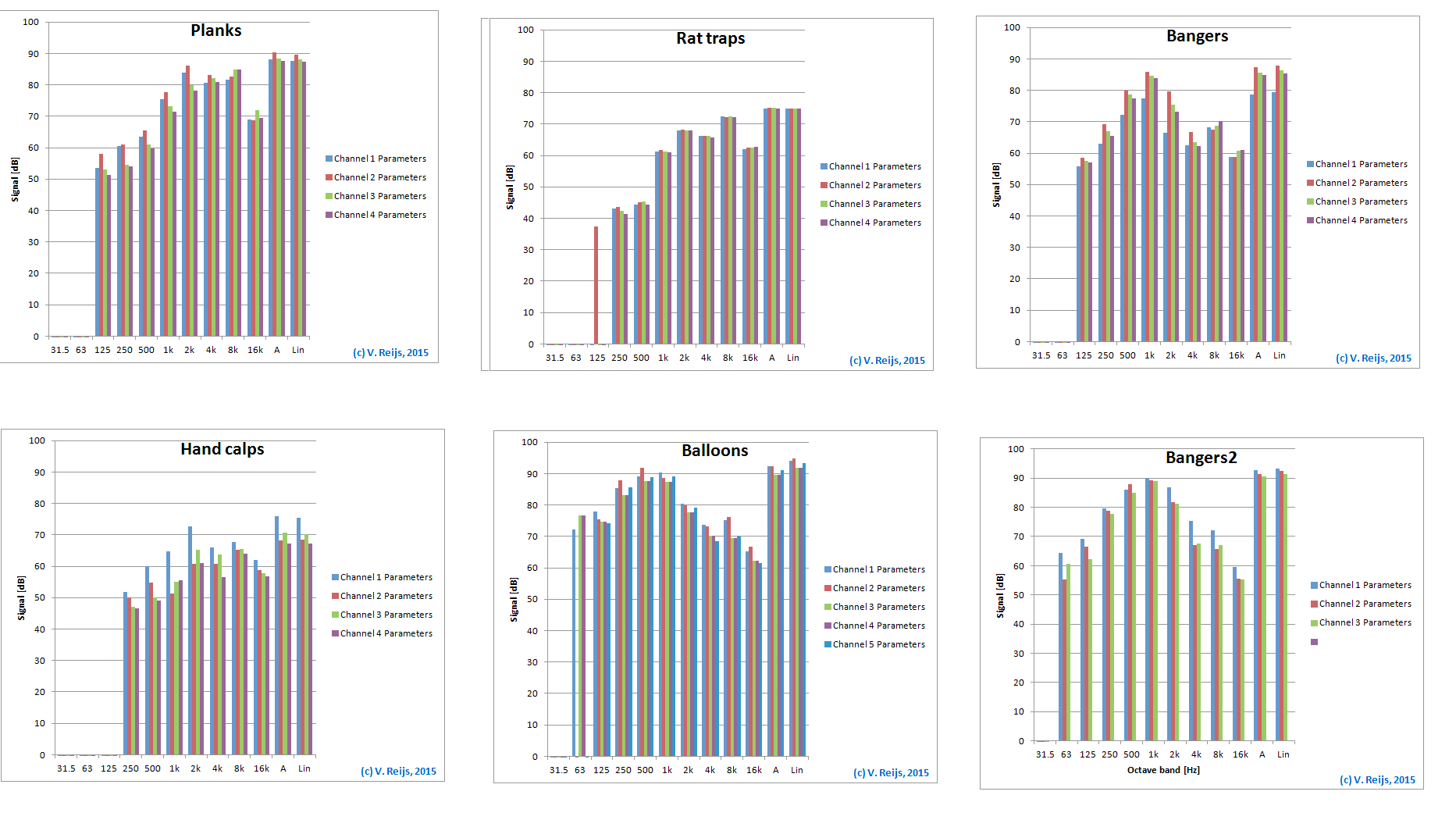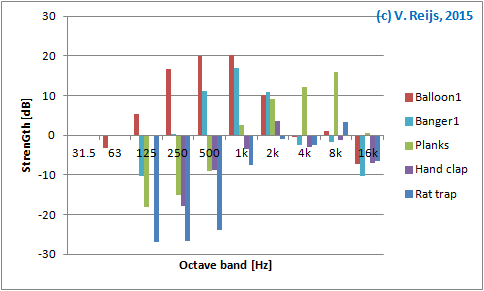NEW
| Type of
measure |
Measures |
JND |
RDI |
| Sound strength |
G: strenGth |
1 dB |
3 dB |
| Clarity measures |
C50: Clarity speech |
1.5 dB |
3 dB |
| C80: Clarity music |
1.5 dB |
3 dB |
|
| Decay times | EDT: Early Decay Time | 4% |
10% |
| RT60 (T30, T20): Reverberation Time | 4% |
10% |
|
| Spacial impression |
IACC: inter Aural Cross Correlation |
0.075 |
0.15 |
| LF: Lateral energy Fraction |
0.05 |
0.1 |
|
| GLL: Late Lateral sound level |
? |
? |
| Source
type |
Reusable |
G [dB] |
G
(1sigma) [dB] |
Size |
Area/Volume |
Distance |
Number of activations |
| Balloon1 |
No |
12 |
1.3 |
spheric ~10 cm (r) |
V= ~8000 cm3 |
2 m |
5 |
| Banger1 |
Yes |
5 |
3.8 |
paper
cone 21*15 cm (r*h) |
V= ~15000 cm3 | 1 m |
4 |
| Planks |
Yes |
10 |
1.2 |
2 planks each 38*5 cm (l*w) |
A= ~200 cm2 |
1 m |
4 |
| Rat trap |
Yes |
-4 |
0.1 |
plastic 12*0.2cm (l*w) on plank 38*5 cm |
A= ~2.5 cm2 | 1 m |
4 |
| Hand clap |
Yes |
-8 |
3.9 |
15*10 cm (l*w) |
A= ~150 cm2 | 1 m |
4 |
| Banger2 |
Yes |
13 |
1.2 |
paper cone 20*30 cm (r*h) | V= ~25000 cm3 | 2 m |
3 |


| Source
type |
C50
[dB] |
C50
(1sigma) [dB] |
C80
[dB] |
C80
(1sigma) [dB] |
EDT [sec] |
EDT
(1sigma) [sec] |
T30
[sec] |
T30
(1sigma) [sec] |
| Balloon1 |
9.1 |
2.3 |
15.9 |
2.0 |
0.34 |
0.05 |
0.33 |
0.01 |
| Banger1 |
12.6 |
1.4 |
17.8 |
1.2 |
0.23 |
0.02 |
0.34 |
0.01 |
| Planks |
12.5 |
0.4 |
20.1 |
0.4 |
0.23 |
0.01 |
0.25 |
0.01 |
| Rat trap |
13.4 |
0.3 |
20.8 |
0.3 |
0.26 |
0.01 |
0.24 |
0.01 |
| Hand clap |
13.2 |
0.7 |
20.4 |
0.7 |
0.23 |
0.01 |
0.24 |
0.01 |
| Banger2 |
10.3 |
0.7 |
16.6 |
0.4 |
0.26 |
0.02 |
0.30 |
0.01 |